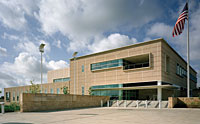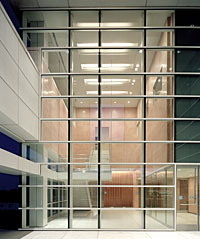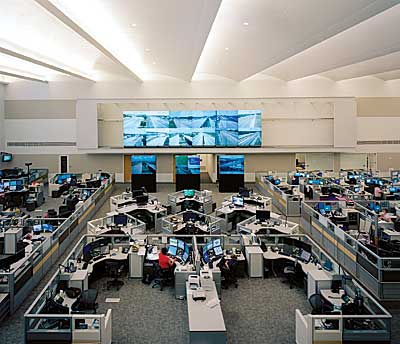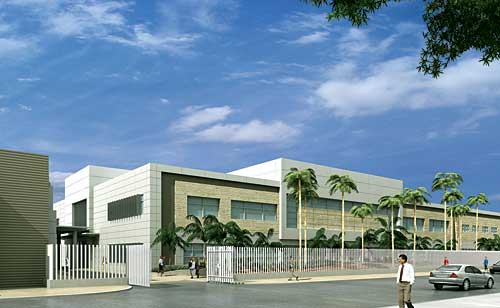Safety and Security Without the Fortress Look
Designed to evolve
Telecommunications and mechanical consultants stress the importance of careful planning in order to achieve designs that provide flexibility. Features such as raised floors and spare conduit and cabling in the right locations are key to allowing alterations and upgrades as technology inevitably matures and agency needs change. "A crystal ball also helps," jokes Shen Milsom Wilke's Emspak.
One development that Illinois SEOC officials see in their crystal ball is an eventual tripling of data-center staff. This anticipated growth not only has space-planning and data-infrastructure implications, but electrical and mechanical ramifications, as well, points out Thomas Condon, a senior consultant with Chicago-based SDI, the project's systems-integration consultant. "The density of computing power is directly related to heat generation," he says.
Â
Â
|
||||||
Â
In order to mitigate the increased heat production, the data center will eventually require additional computer-room air-conditioning units, or CRACs, says ESD's Kuppinger. The piping and electrical service sufficient to handle these equipment additions are already in place, allowing CRAC installation without complicated or costly changes to the mechanical and electrical infrastructure, he explains.
The LEEDing edge
Like building owners throughout the country, emergency-response agencies are increasingly aware of the effect that the construction and operation of their facilities has on the environment and are taking steps to make their buildings more sustainable. One example is Austin, Texas's Combined Transportation, Emergency & Communications Center, which earned LEED Silver certification from the U.S. Green Building Council (USGBC) after its completion in 2003, and is designed to use 20 percent less energy than a building that complies with code. The center's exterior envelope incorporates shading devices and high-performance glazing. The interior paints and sealants emit low levels of volatile organic compounds. And each workstation has a personal environmental-control system that includes a sound-masking device and allows occupants to change air flow and temperature. Many of these strategies not only improve building performance, but also enhance indoor air quality and acoustics, provide access to daylight and views, and generally create a more comfortable environment for employees, who sometimes work long shifts and are responsible for making difficult decisions in stressful situations, points out DMJM's Jose Palacios, the project's design principal.
Â
Â
|
Â
In Los Angeles, county officials plan to pursue LEED certification for the the new OEM building after its completion next year. And this summer, the facility in Brooklyn became the first New York City−owned building to earn LEED certification when it was awarded a Silver rating. The agency decided to pursue certification even before passage of Local Law 86, which now requires that new city facilities adhere to USGBC standards. A green building is a good fit for the OEM, points out Dickinson, "since so much of our work revolves around issues that affect the environment."












